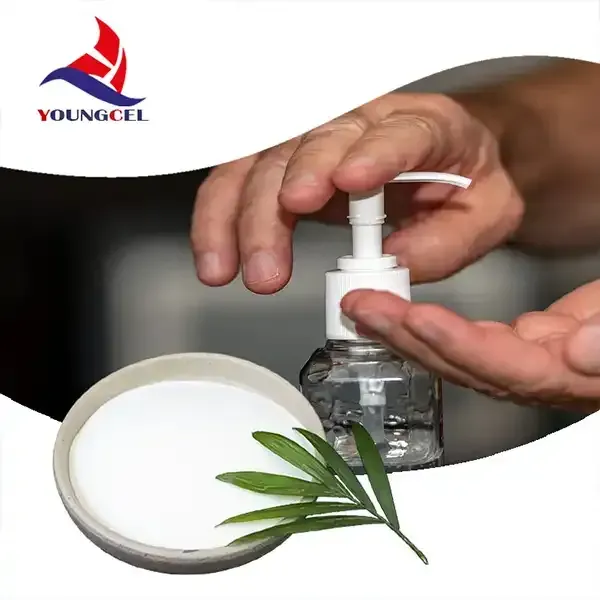The Role of Hydroxypropyl Methylcellulose (HPMC) in Modern Industries
Hydroxypropyl Methylcellulose (HPMC) is a semi-synthetic polymer derived from cellulose, a natural polysaccharide found in plant cell walls. As a cellulose ether, HPMC has gained considerable attention and application across various industries, particularly in construction, pharmaceuticals, food, and personal care. This article delves into the characteristics, production, and applications of HPMC, highlighting its significance in modern technology and manufacturing processes.
Characteristics of HPMC
HPMC is a white, odorless powder that is soluble in cold water and forms a gel-like substance when mixed with water. The degree of substitution (DS), which defines the number of hydroxypropyl and methyl groups introduced into the cellulose structure, directly influences the properties of HPMC. As a result, it can be tailored to meet specific needs in different industries.
One of the most notable properties of HPMC is its ability to enhance the viscosity of solutions, making it an excellent thickening agent. Additionally, HPMC demonstrates excellent film-forming characteristics, providing a protective barrier that is both flexible and stable. Furthermore, it exhibits high stability under a range of pH levels and temperatures, making it suitable for various applications where other polymers may fail.
Production of HPMC
The production of HPMC involves the etherification of cellulose with propylene oxide and methyl chloride. The process begins with the purification and grinding of cellulose obtained from wood or cotton. Following this, the cellulose undergoes a treatment with alkali to enhance reactivity, subsequently followed by etherification, where the cellulose reacts with propylene oxide and methyl chloride.
Once synthesized, HPMC is dried and ground into the desired particle size. The final product is subjected to rigorous quality control to ensure consistency in viscosity, solubility, and particle size. This careful production process contributes to the versatility of HPMC, making it suitable for a wide range of applications.
cellulose ether hpmc

Applications of HPMC
HPMC's unique properties make it invaluable in numerous fields
1. Construction In the building industry, HPMC is commonly used as an additive in cement, gypsum, and tile adhesives. Its ability to improve workability, water retention, and adhesion is crucial for ensuring the durability and longevity of construction materials. HPMC enhances the ease of application and enhances bonding, making it a preferred choice among contractors.
2. Pharmaceuticals HPMC is widely used in the pharmaceutical industry for its role in drug formulation. It acts as a binder, film-coating agent, and controlled-release modifier in tablets and capsules. Its safety and compatibility with a variety of active ingredients make it a popular excipient in the production of oral dosage forms. Furthermore, HPMC has applications in ophthalmic solutions and as a suspending agent in liquid formulations.
3. Food Industry In food processing, HPMC serves as a thickening agent, emulsifier, and stabilizer. It enhances the texture and consistency of food products, from sauces to ice creams. Due to its plant-based origin, HPMC is also a sought-after ingredient in vegan and gluten-free products, providing a suitable alternative to traditional emulsifiers.
4. Personal Care Products HPMC is utilized in a myriad of personal care formulations, including creams, lotions, and shampoos. Its thickening and film-forming properties improve product stability and performance. Additionally, HPMC aids in enhancing the sensory attributes of these products, making them more appealing to consumers.
Conclusion
Hydroxypropyl Methylcellulose is a remarkable polymer that exemplifies the advancements in material science and its applications. Its versatility, safety, and performance across various industries underscore its importance in modern manufacturing and product formulation. As industries continue to evolve and demand innovative solutions, HPMC is poised to play an increasingly vital role in meeting the challenges of tomorrow. With continued research and development, the potential of HPMC is bound to expand, paving the way for new and exciting applications in the future.
-
A Comprehensive Guide to Methyl Ethyl Hydroxyethyl Cellulose: Applications and Industry InsightsNewsNov.24,2025
-
Understanding Methyl 2 Hydroxyethyl Cellulose: Uses, Benefits & Industry InsightsNewsNov.24,2025
-
Hydroxyethyl Methyl Cellulose HEMC: Industrial Uses, Benefits & Future TrendsNewsNov.23,2025
-
HEMC Cellulose: Versatile & Sustainable Industrial Polymer | YoungcelNewsNov.23,2025
-
Methyl Hydroxyethyl Cellulose: Versatile Building Block for Industry & SustainabilityNewsNov.23,2025
-
CAS 9032 42 2: Understanding Polyvinyl Alcohol's Impact on Industry & SustainabilityNewsNov.22,2025




